As a laundry care expert, it is important to understand the significance of keeping washing machines clean. A dirty washing machine can lead to poor performance, unpleasant odors, and even mold growth. Therefore, it is essential to know how to clean a washing machine the right way in order to maintain its efficiency and prolong its lifespan.
In this article, we will discuss the proper techniques for cleaning both top-loading and front-loading washing machines. We will cover everything from basic maintenance tasks such as wiping down the exterior and detergent dispenser, to deep cleaning methods involving vinegar and baking soda. By following these tips and tricks, you can ensure that your washing machine stays in optimal condition and continues to serve you well for years to come.
The Importance Of Cleaning Your Washing Machine
Regular cleaning of your washing machine is essential to maintaining its optimal performance and extending its lifespan. One of the most important aspects of cleaning your washing machine is descaling, which involves removing any mineral buildup in the machine. Over time, hard water can cause mineral deposits to accumulate in your washing machine, leading to clogs and reduced efficiency.
The importance of descaling cannot be overstated, as it not only improves the performance of your washing machine but also saves you money in the long run. Mineral buildup can cause mechanical issues that may require costly repairs or even replacement of the entire unit. Additionally, a cleaner washing machine means cleaner clothes, as mineral buildup can transfer onto your clothes during the wash cycle.
If you live in an area with hard water, it’s especially important to clean your washing machine regularly. Hard water contains high levels of minerals like calcium and magnesium that can leave residue on surfaces over time. This residue can lead to clogs in your washing machine’s drainage system or reduce its ability to clean clothes effectively. By incorporating regular descaling into your laundry care routine, you can prevent these issues and ensure that your washing machine remains in top condition for years to come.
To keep your washing machine running smoothly, there are a few basic maintenance tasks you should perform regularly. These include cleaning the lint filter after each use and wiping down the inside of the drum with a damp cloth every few weeks. By following these simple steps, you can help prevent dirt and grime from building up inside your machine and ensure that it continues to clean clothes effectively.
Basic Maintenance Tasks For Keeping Your Washing Machine Clean
Properly cleaning your washing machine is essential for maintaining its performance and prolonging its lifespan. In the previous section, we discussed the importance of cleaning your washing machine regularly. Now, let’s dive into basic maintenance tasks that you can perform to keep your washing machine clean.
Firstly, make sure to use DIY washing machine cleaners or natural cleaning solutions. These are effective in removing dirt and grime buildup without damaging your appliance or leaving harmful chemical residues. You can easily create a homemade solution using baking soda and vinegar. Simply mix half a cup of baking soda with two cups of white vinegar and run a hot cycle without any clothes in the drum.
Secondly, wipe down the interior and exterior of your washing machine after every use. This will prevent mildew growth and eliminate any remaining detergent residue or lint buildup. Use a damp cloth to clean the drum, door seal, dispenser drawer, and control panel.
Lastly, don’t forget to clean the filters regularly to remove lint and debris from your washing machine. This will enhance its efficiency and power while reducing wear-and-tear on its components. Refer to your user manual for instructions on how to locate and remove the filters.
By implementing these basic maintenance tasks into your laundry routine, you can ensure that your washing machine remains in optimal condition for years to come. In the subsequent section, we will discuss how to effectively remove lint and debris from your washing machine without causing any damage or malfunctions.
Removing Lint And Debris From Your Washing Machine
As a laundry care expert, it’s no secret that washing machines can accumulate lint, debris and hard water buildup over time. But fear not, for there are simple solutions to these pesky problems! First up, let’s tackle the issue of removing lint and debris from your machine.
One effective method is to use a lint roller or tape to remove any visible buildup on the drum and agitator. For areas that are harder to reach, such as the rubber gasket around the door, try using an old toothbrush or a damp cloth. Another option is to run an empty cycle with hot water and vinegar, which will break down any remaining debris and leave your machine fresh and clean.
Now onto hard water buildup. If you live in an area with hard water, mineral deposits can accumulate in your washing machine over time. To combat this, try using natural cleaners like baking soda or lemon juice instead of chemical solutions. Simply add a quarter cup of baking soda or half a cup of lemon juice to your detergent dispenser and run an empty cycle with hot water.
Next up: cleaning the exterior of your washing machine. But before we move onto that step, make sure you’ve thoroughly removed all lint, debris and hard water buildup from inside your machine for optimal cleanliness.
Cleaning The Exterior Of Your Washing Machine
To keep your washing machine looking clean and new, it’s important to not neglect the exterior. Dirt, grime, and detergent residue can build up on the outside of your machine over time. Here are some tips for cleaning the exterior of your washing machine.
Firstly, choose cleaning products that are safe for your machine’s surface. Abrasive cleaners or scrubbers can scratch or damage painted or coated surfaces. Instead, use mild soap and water or a mixture of vinegar and water to wipe down the exterior. If you have stubborn stains or marks, try using a specialized cleaner made specifically for washing machines.
Secondly, protect your washing machine from future dirt and grime buildup by wiping it down regularly after each use. Use a soft cloth to remove any stray detergent drips or spills from the lid or front panel. This will help prevent any buildup from occurring in the first place.
Finally, consider investing in a cover for your washing machine if you live in an area with heavy dust or dirt. A cover will help protect your machine from outside elements and keep it looking like new for longer.
Numeric List:
- Regular wiping down of the exterior of the washing machine is essential
- Use cleaning products that are safe for the surface of the washing machine
- Invest in a cover for your washing machine to protect it from outside elements
- Protecting the washing machine from future dirt requires regular maintenance
Cleaning The Detergent Dispenser
After all that vigorous scrubbing of the exterior of your washing machine, it’s time to move on to the next step in achieving an impeccably clean machine. The detergent dispenser is a crucial component of your washing machine that often goes unnoticed during cleaning sessions. Neglecting this essential part of your washing machine can cause mold and mildew buildup, which can be harmful to your health and affect the efficiency of your machine.
Cleaning the detergent dispenser requires a proper technique that involves removing it from the washing machine and soaking it in hot water with soap. First, locate the dispenser and gently pull it out from its slot. Next, prepare warm soapy water by dissolving laundry detergent or dish soap in a bowl or sink. Soak the dispenser for about 30 minutes before using a brush or sponge to scrub away any remaining residue. Rinse thoroughly with hot water before reinserting into its slot.
One common mistake people make when cleaning their detergent dispensers is forgetting to clean underneath it. This area is often neglected but can harbor buildup that affects the overall cleanliness of your washing machine. Additionally, using too much detergent than recommended can cause unnecessary buildup and clog up the dispenser over time. Following these tips will ensure not only a clean washing machine but also an efficient one that functions at its best capacity.
Now that you have successfully cleaned your washing machine’s exterior and detergent dispenser, let’s move on to another important component – removing and cleaning the filter.
Removing And Cleaning The Filter
The filter is an essential component of a washing machine that traps lint, hair, and other debris from clothes during the wash cycle. Over time, these substances accumulate and can clog the filter, leading to poor performance and even damage to the machine. Therefore, regular cleaning of the filter is necessary to ensure optimal functioning of your washing machine.
Cleaning techniques for filters vary depending on the model of your washing machine. Generally, filters are located behind a panel at the bottom front of your washer or inside the agitator tube in top-loading machines. To remove it, consult your owner’s manual for specific instructions as different models have different methods. Once removed, rinse it under running water and use a soft brush or toothbrush to scrub it gently. Avoid using harsh chemicals that can corrode or damage the filter.
Maintenance procedures should be followed to prolong the life of your washing machine and ensure that it continues to function efficiently. Some helpful tips include always checking pockets for loose items such as coins or buttons before loading clothes into the washer; avoiding overloading it with too many clothes; wiping down the door seal after each use; and using only recommended detergents and fabric softeners.
- Regular cleaning of your washing machine’s filter ensures optimal functioning.
- Using harsh chemicals can cause damage to your filter.
- Following maintenance procedures helps prolong the life of your washing machine.
With proper maintenance, you can enjoy years of trouble-free laundry with your washing machine. However, if you notice unusual noises or smells coming from your washer despite regular cleaning of its filter, it may be time for a deep clean using vinegar. In this next section, we’ll explore how vinegar can help restore your washing machine’s cleanliness and freshness.
Deep Cleaning Your Washing Machine With Vinegar
After removing and cleaning the filter, it’s time to move onto the next step in properly cleaning your washing machine: deep cleaning with vinegar. Vinegar is a powerful natural cleaner that is effective at removing buildup and odors from your machine. Plus, it’s safe for both HE and traditional washing machines.
To start, fill your washing machine with hot water on the largest load setting. Add two cups of white vinegar to the water and let the machine run through a complete wash cycle. Once the cycle is finished, wipe down the inside of the drum with a clean cloth or sponge to remove any remaining residue.
But vinegar isn’t just great for cleaning your washing machine; it can also be used for cleaning clothes and other household tasks. When added to your laundry, vinegar helps remove stains and odors from clothing. It can also be used as a fabric softener or as a way to freshen up towels and linens. Additionally, vinegar can be used to clean kitchen appliances like coffee makers and refrigerators, as well as bathroom fixtures like showerheads and toilets.
As you can see, vinegar is an incredibly versatile household cleaner that should have a permanent spot in your cleaning arsenal. But if you’re looking for an even deeper clean for your washing machine, it’s time to turn to baking soda.
Deep Cleaning Your Washing Machine With Baking Soda
Ah, the washing machine. It’s an appliance that we rely on to keep our clothes clean and smelling fresh. But have you ever stopped to think about how often you clean your washing machine? If you’re like most people, probably not very often. And while it may seem counterintuitive, a dirty washing machine can actually make your clothes dirtier. That’s why it’s important to deep clean your washing machine every once in a while to ensure that it’s working properly.
One effective way of deep cleaning your washing machine is by using baking soda. Baking soda is a natural cleaner that can help remove built-up dirt and grime from the nooks and crannies of your washer. To start, simply add two cups of baking soda to the detergent dispenser of your top-loading washing machine or directly into the drum of your front-loading washing machine. Run a hot water cycle on the largest load setting, without any clothes in the washer. This will allow the baking soda to penetrate all areas of the washer.
After running a cycle with baking soda, consider adding lemon juice for a fresh smelling washing machine. Lemon juice has natural antibacterial properties and can help eliminate any lingering odors in your washer. Simply add one cup of lemon juice to the drum of your washing machine and run another hot water cycle on the largest load setting. Your washer will smell fresh and clean in no time.
Now that you’ve deep cleaned the inside of your washing machine with baking soda and lemon juice, it’s time to move onto cleaning the drum and gasket of a front-loading washing machine. This area tends to collect moisture and dirt, which can lead to mold growth if left uncleaned for too long. Stay tuned for our next section where we’ll show you how to effectively clean these areas using simple household items.
Cleaning The Drum And Gasket Of A Front-Loading Washing Machine
The drum of a front-loading washing machine should be cleaned regularly to ensure efficient operation. The gasket of the machine should be removed and cleaned with a damp cloth. An appropriate sanitizing solution can be used to clean the drum and gasket. It is important to ensure that the sanitizing solution is made with a mild detergent or bleach to avoid any potential damage to the machine’s components. After cleaning the drum and gasket, it is important to rinse the components thoroughly with water to remove any residue from the sanitizing solution. Finally, it is recommended to leave the door of the machine open to help dry the drum and gasket after cleaning.
Cleaning The Drum
As a laundry care expert, it is important to emphasize the significance of drum maintenance in ensuring the longevity and efficiency of your front-loading washing machine. The drum is where clothes are placed during the wash cycle, making it susceptible to dirt, grime, and mildew buildup over time. To clean the drum properly, you need to use cleaning products that are specifically designed for this purpose. Avoid using harsh chemicals or abrasive materials as they may damage the surface of the drum.
To start cleaning the drum, remove any clothing or debris that may be inside. Then, mix equal parts of water and white vinegar in a spray bottle and apply it generously on the inside surface of the drum. Let it sit for about 30 minutes before wiping it down with a damp cloth. You can also use a commercial washing machine cleaner instead of vinegar if you prefer. Just make sure to follow the instructions on the label carefully.
After cleaning the drum thoroughly, run an empty hot water cycle to rinse away any remaining residue. This will help eliminate any lingering odors or bacteria that may have been left behind. By maintaining your washing machine’s drum regularly using these simple steps, you can ensure that your machine performs at its best for years to come.
Gasket Removal
As a laundry care expert, it is crucial to maintain the gasket of your front-loading washing machine. The gasket is a rubber seal that lines the door of the washing machine, preventing water from leaking out during wash cycles. However, over time, this area can collect dirt and grime, leading to unpleasant odors and potential mold growth. By incorporating regular gasket maintenance into your laundry routine, you can prevent these issues and extend the life of your washing machine.
To remove dirt and debris from the gasket, start by wiping it down with a damp cloth. For tougher build-up or mold growth, you may need to use a cleaning solution specifically designed for gaskets. Apply the cleaner according to its instructions and let it sit for several minutes before wiping it away with a damp cloth. Be sure to thoroughly dry the gasket after cleaning to prevent any remaining moisture from causing further mold growth.
If you notice any tears or cracks in the gasket during maintenance, it may be time for replacement. A damaged gasket can cause leaks or decrease efficiency during wash cycles. To replace the gasket, first, ensure that you have purchased a replacement that is compatible with your washing machine’s make and model. Then carefully follow instructions provided in your washing machine’s manual or seek help from a professional repair service if needed. With proper maintenance and occasional replacement tips for your washing machine’s gasket, you can continue to enjoy hassle-free laundry days while extending the life of your appliance.
Sanitizing Solution
To ensure that your front-loading washing machine stays clean and efficient, it is essential to regularly clean both the drum and gasket. While wiping down the gasket with a damp cloth can remove dirt and grime, a deep clean with a sanitizing solution is necessary for tougher build-up or mold growth. DIY sanitizing solutions are an eco-friendly option that can effectively eliminate germs and bacteria without harsh chemicals.
One easy-to-make DIY sanitizing solution is a mixture of equal parts water and white vinegar. This solution not only disinfects but also helps to remove any odors from the washing machine. Simply apply the solution onto a clean cloth or sponge and wipe down the drum and gasket thoroughly. For stubborn stains, allow the solution to sit for several minutes before wiping away with a damp cloth.
The benefits of using eco-friendly options like DIY sanitizing solutions go beyond just cleaning your washing machine. These solutions are cost-effective, non-toxic, and better for the environment than chemical cleaners. By incorporating regular cleaning with a DIY sanitizing solution into your laundry routine, you can ensure that your front-loading washing machine remains in top condition while also doing your part in caring for the planet.
Preventing Mold And Mildew Growth In Your Washing Machine
Preventing odor buildup in your washing machine is essential to maintaining its cleanliness. One way to prevent mold and mildew growth is by leaving the washing machine door open after use. This allows air to circulate and dry out any lingering moisture. Additionally, wiping down the inside of the machine with a dry cloth after each use can help remove any remaining water droplets.
Another effective method for preventing mold and mildew growth is by using essential oils for a fresh scent. Simply add a few drops of your favorite essential oil, such as lavender or lemon, to a damp washcloth and toss it into the washing machine during the final rinse cycle. This will leave your laundry smelling fresh without relying on synthetic fragrances that can cause irritation or allergic reactions.
By implementing these preventative measures, you can avoid unpleasant odors caused by mold and mildew buildup in your washing machine. In the next section, we will discuss how to use bleach effectively to clean your washing machine and eliminate any existing mold or mildew growth.
Transition: Now that we’ve covered ways to prevent mold and mildew growth in your washing machine, let’s move on to discussing how to effectively use bleach for cleaning purposes.
Using Bleach To Clean Your Washing Machine
Did you know that over 60% of washing machines have been found to be contaminated with harmful bacteria? This is why it is essential to disinfect your washing machine regularly to prevent the spread of germs and ensure that your clothes are clean and fresh. Bleach is a highly effective cleaning agent that can help eliminate bacteria, viruses, and other microorganisms from your washing machine.
One of the benefits of disinfecting your washing machine with bleach is that it can help remove stubborn stains and odors. Over time, dirt, grime, and detergent residue can build up inside your washing machine, leading to unpleasant smells and unsightly stains on your clothes. By adding bleach to your laundry cycle once a month, you can effectively remove these impurities and keep your machine running smoothly.
If you prefer not to use bleach, there are alternative cleaning agents that you can use instead. For example, white vinegar is an excellent natural cleaner that can help dissolve mineral deposits and remove soap scum from your washing machine. Baking soda is another natural alternative that can help deodorize your washer by neutralizing strong odors.
To continue maintaining a hygienic washing machine, don’t forget to clean the fabric softener dispenser. Over time, this area may become clogged with leftover fabric softener or detergent residue. To avoid this buildup, simply remove the dispenser drawer from the machine and wash it thoroughly with warm water and soap. Allow it to dry completely before replacing it back into the washer for continued use.
Cleaning The Fabric Softener Dispenser
After using bleach to clean your washing machine, it’s important to address the fabric softener dispenser. Fabric softener can build up in this area over time, leading to a musty smell and potentially even mold growth. Follow these steps to effectively clean the fabric softener dispenser and prevent build up:
- Remove the dispenser from the washing machine. Refer to your user manual for specific instructions on how to do this for your particular model.
- Soak the dispenser in hot water and dish soap for about 30 minutes. This will help loosen any built-up residue.
- Scrub the dispenser with a brush or sponge to remove any remaining residue.
- Rinse the dispenser thoroughly with hot water.
- Allow the dispenser to air dry completely before reinserting it into the washing machine.
By regularly cleaning your fabric softener dispenser, you can prevent buildup that can lead to unpleasant odors and potential health risks. Make sure to follow these steps at least once every few months or as needed based on usage.
Next, we’ll discuss how to clean the inner tub of your washing machine, which is another important step in maintaining a clean and efficient appliance.
Cleaning The Inner Tub
As a laundry care expert, you might think that cleaning the inner tub of a washing machine is just as easy as loading and unloading dirty clothes. Well, think again! The inner tub of a washing machine requires a different set of skills to clean it properly. So, what are the best ways to clean the inner tub? First, choose the appropriate cleaning agents for your machine.
When cleaning an inner tub, ensure that you use appropriate cleaning agents. Avoid using harsh chemicals that might damage the machine or harm your health. Instead, use mild detergents or natural cleaning products like vinegar and baking soda. Mix these substances with hot water to create a solution that will help dissolve any residues inside the tub. Leave the solution in for about thirty minutes before scrubbing with a soft-bristled brush.
Another way to clean an inner tub is by using a pressure washer. A pressure washer can blast away any grime and dirt inside your washing machine’s drum quickly and efficiently. However, be careful when using this method as too much pressure can cause damage to sensitive parts of your washer or even lead to flooding in your laundry room.
Now that you know how to clean the inner drum of your washing machine, it’s time to learn some tips for maintaining its cleanliness over time. By regularly wiping down the exterior surface, checking for clogs in hoses and filters, and running regular maintenance cycles on your machine, you’ll be able to keep it running smoothly for years to come. Remember; always take good care of your washing machine so that it can serve you well in return!
Tips For Maintaining A Clean Washing Machine
Maintaining a clean washing machine is crucial to ensuring that your clothes are thoroughly cleaned and sanitized with every wash. To keep your appliance in top condition, it’s important to clean it regularly using the best cleaners or natural solutions. The frequency of cleaning depends on how often you use your machine, but generally, it’s recommended to clean it at least once a month.
When it comes to the best cleaners for washing machines, there are many options available in the market. However, it’s essential to choose a cleaner that is specifically designed for washing machines and does not contain harsh chemicals that can damage the appliance. Alternatively, you can opt for natural solutions such as vinegar or baking soda, which are effective in removing dirt and grime buildup while being safe for the environment.
The frequency at which you should clean your washing machine depends on how often you use it and how dirty your clothes are. If you have a large family and do laundry frequently, you may need to clean your machine more often than someone who only does laundry once a week. However, regardless of how frequently you use your machine, regular cleaning is necessary to prevent mold growth and other issues that can affect its performance over time.
Troubleshooting Common Washing Machine Cleaning Issues
Agitation problems are one of the most common issues that people face when cleaning their washing machines. If you notice that your washing machine is not agitating as it should, there could be several reasons behind this. For instance, it could be due to a malfunctioning motor coupling or worn-out agitator dogs. To fix these issues, you should call an expert in laundry care who will diagnose and repair the problem.
Another issue that can arise when cleaning your washing machine is drainage problems. This is often characterized by water backing up in the drum or failing to drain completely from the machine after a cycle. Drainage issues can be caused by various factors such as clogged drain hoses, blocked pump filters or malfunctioning drain pumps. To rectify this problem, you need to troubleshoot the cause of the issue and address it accordingly.
In conclusion, while cleaning your washing machine may seem like an easy task, it can sometimes present some challenges that require professional expertise to resolve. Troubleshooting agitation and drainage problems are just some of the issues that may arise while cleaning your washing machine. Therefore, if you encounter any such problems, it would be best to seek help from an expert in laundry care who can diagnose and fix them appropriately without causing more damage to your appliance.
Conclusion
Keeping your washing machine clean is essential for maintaining its effectiveness and prolonging its lifespan. Regular cleaning and maintenance will not only help prevent unpleasant odors and stains on your clothes but also improve the efficiency of the appliance. Basic cleaning tasks such as removing lint and debris, cleaning the detergent dispenser, and wiping down the exterior of the machine are easy to do and should be done regularly.
To ensure that your washing machine is always in top condition, it’s important to clean it thoroughly at least once a month. This includes cleaning the inner tub, fabric softener dispenser, and performing any necessary troubleshooting tasks. With proper care and maintenance, you can enjoy a reliable washing machine that will keep your clothes looking their best for years to come.
In conclusion, taking good care of your washing machine is essential if you want it to continue working effectively for many years. By following these simple steps for regular maintenance and deep cleaning, you can ensure that your machine stays in good condition while keeping your laundry fresh and clean. Remember to stay on top of basic cleaning tasks like removing debris from filters or dispensers so that larger issues don’t arise. With these tips in mind, you’ll be able to keep your washing machine running smoothly for many loads to come.
Image Credits
- “Washing machine” by 24oranges.nl (featured)

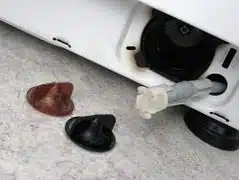

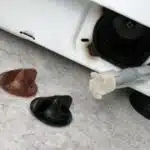







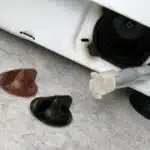




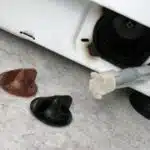





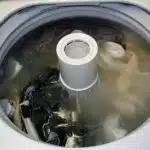
![How To Wash And Care For White Clothes 23 The only genuine borax soap cleanses hygienically saves the clothes and hands. 20 Mule-Team brand Boraxo white laundry soap [front]](https://green-life.blog/wp-content/uploads/2023/05/YDXLLCovnOjq-150x150.jpg.webp)





